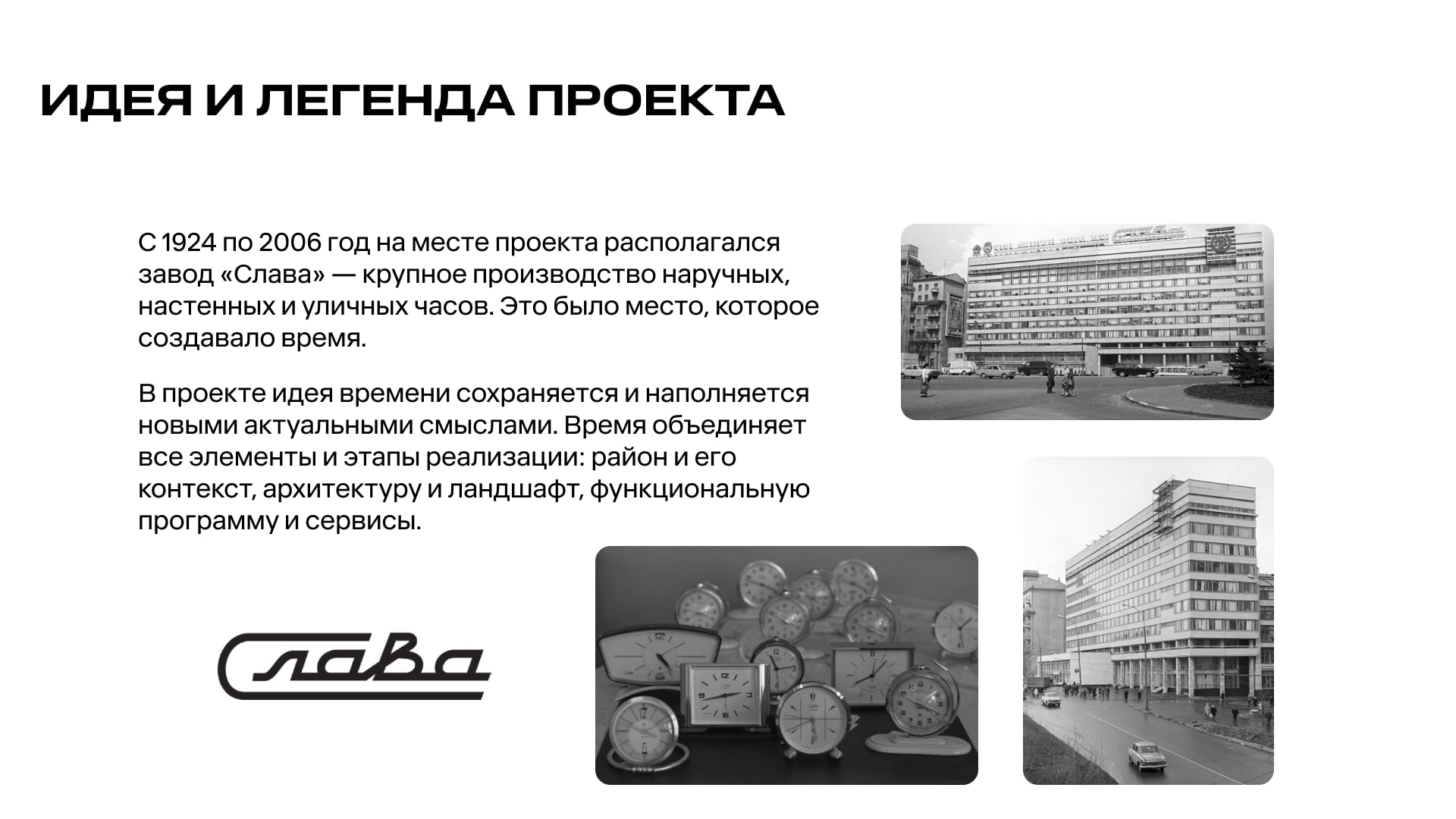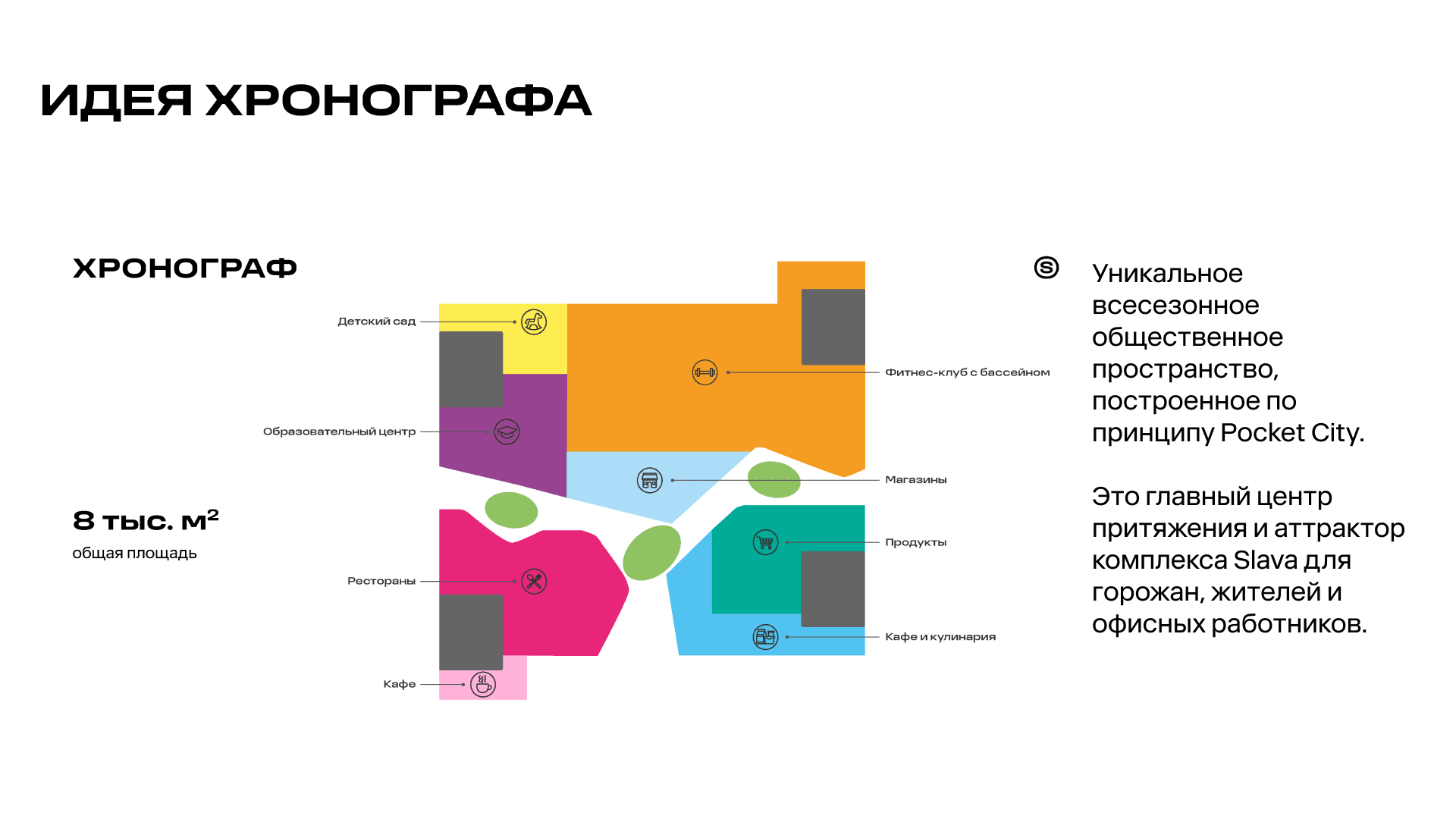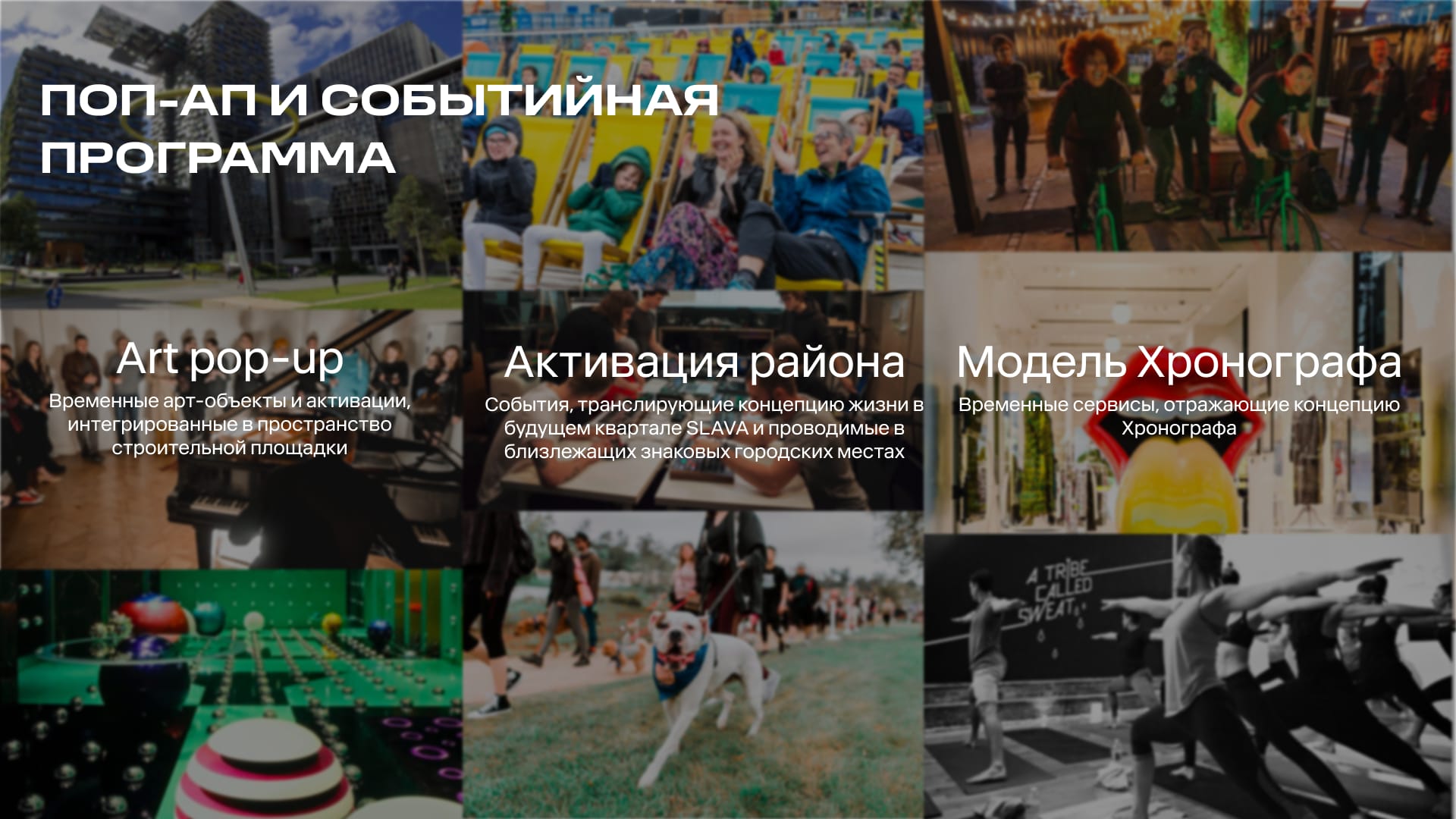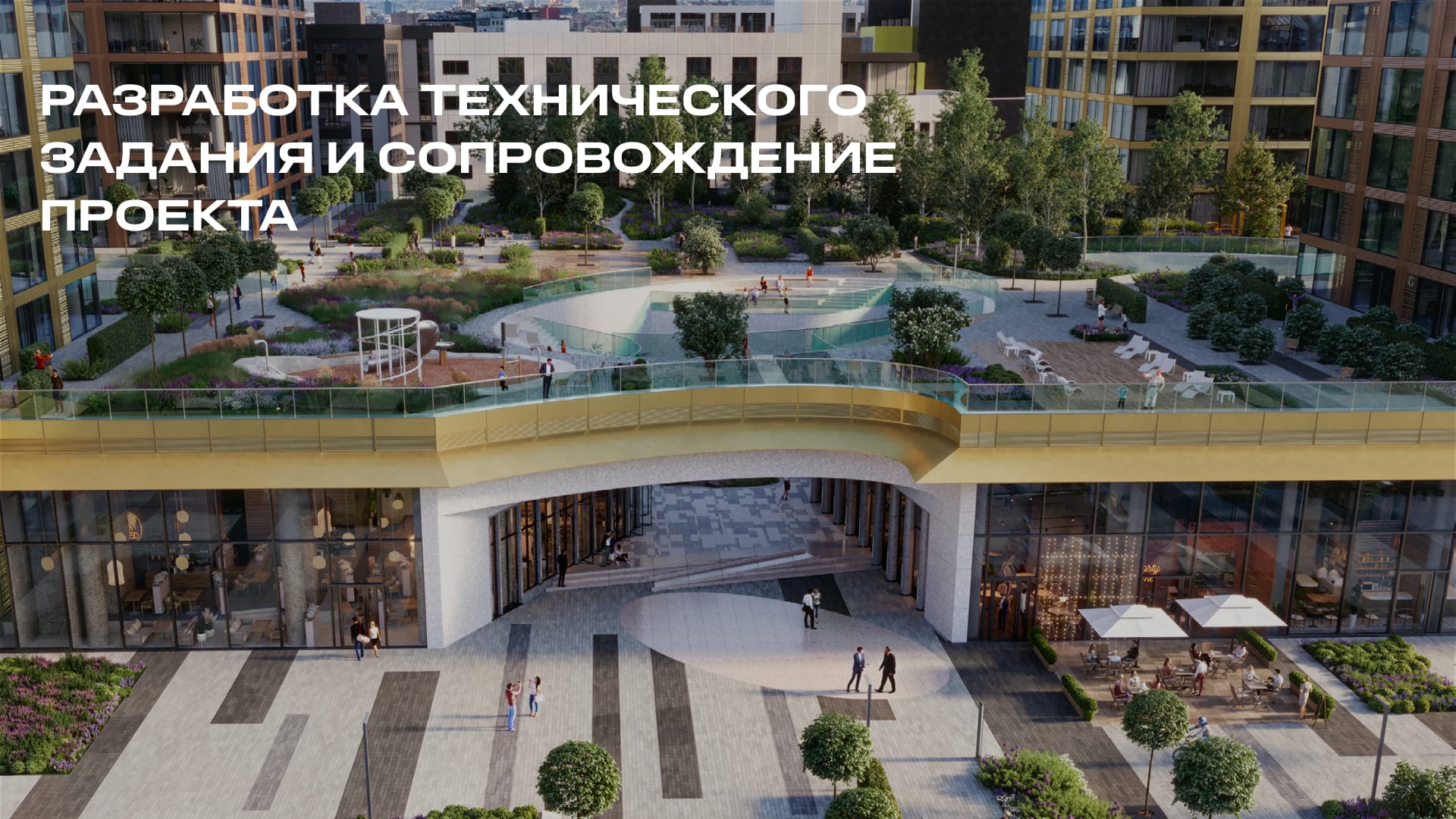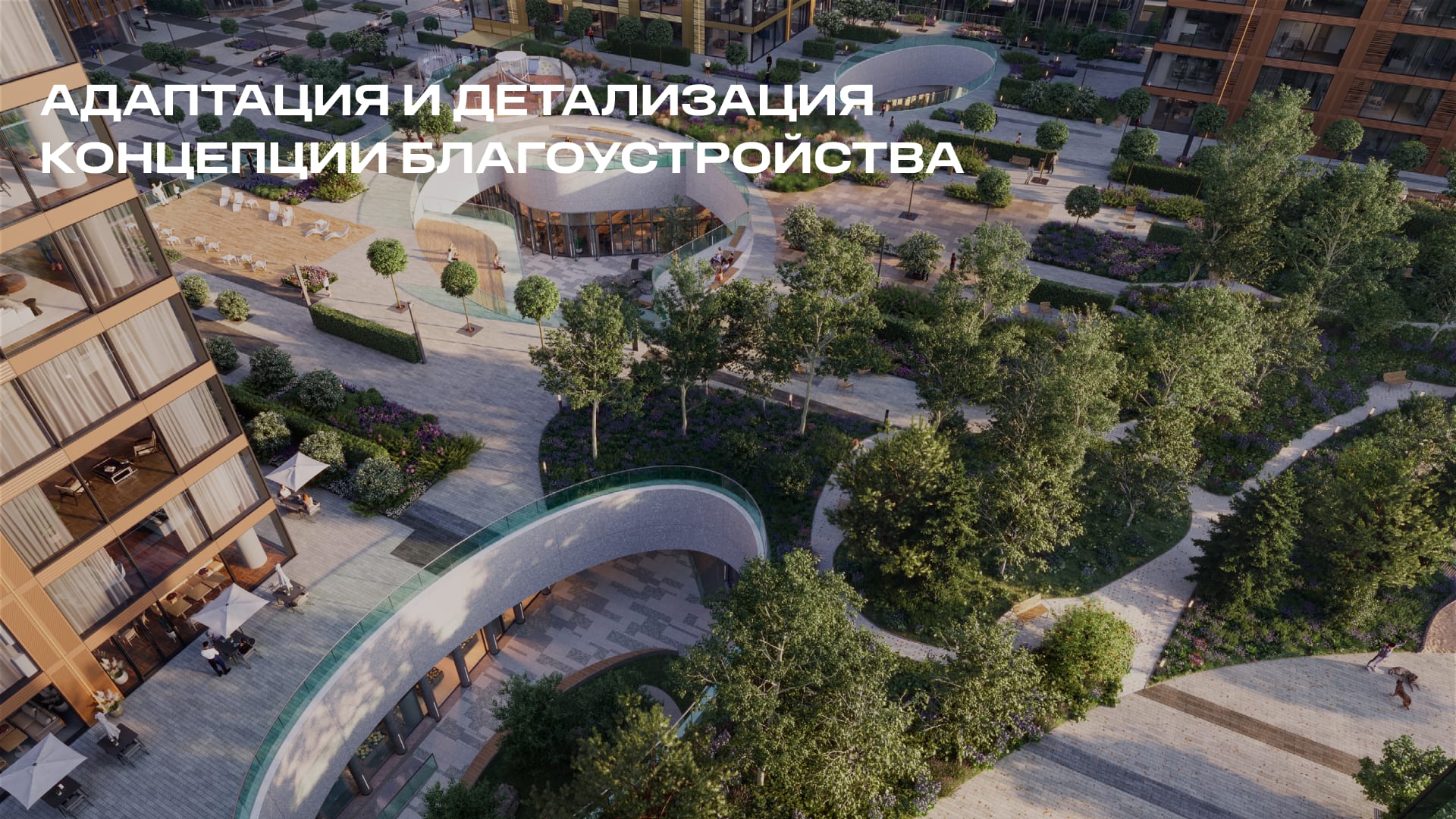slava
a new urban subcenter on the site of the watch factory

how to create a new living environment where all elements are united by the concept of time?
In the Belorusskaya metro area, a large territory (about 500,000 square meters) is being developed for the multifunctional SLAVA complex. From 1924 to 2006, the site was home to the Slava factory, a major producer of wristwatches, wall clocks, and street clocks.
The CM International team participated in the project by creating a grand concept and legend for the site, linking the future residential complex to the concept of time. Time unites all elements and stages of implementation: the district and its context, architecture and landscape, functional programs, and services. Based on this idea, the Chronograph emerged—an innovative year-round public space designed according to the Pocket City principle, where everything needed is within arm's reach, "like in a pocket": relaxation, socializing, shopping, entertainment, food, sports, and culture. This space will serve as the main attraction and draw for the SLAVA complex, benefiting locals, residents, and office workers. Along with the idea of time and the Chronograph concept, the team worked on event and pop-up programs for the future residential complex, as well as its communication strategy and positioning.
SLAVA is a large project consisting of five phases. The architecture was designed by an international team of renowned firms: DYER (UK), NIKKEN SEKKEI (Japan), and JAHN ARCHITECTURE (USA). For architect Helmut Jahn, this project became his final work. The landscape design for SLAVA 1 was created by the GILLESPIES team (UK), while the original landscaping concepts for SLAVA 2-3 and 4 were developed by HARGREAVES JONES (USA) in collaboration with CM International specialists. To effectively work with the international team, CM International developed a technical assignment, supported the project throughout the landscaping concept creation, and adapted and detailed it.
